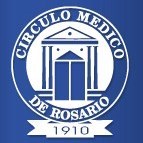CURRENT STATUS OF THE PANDEMIC CAUSED BY SEVERE ACUTE RESPIRATORY SYNDROME CORONAVIRUS 2: A NARRATIVE REVIEW
Keywords:
Acute severe respiratory syndrome, SARS-CoV-2, COVID-19, pandemicAbstract
Objective: To describe extensively the epidemic status of COVID-19, the agent that manifests it and the treatments necessary to combat the epidemic, since it is a global emergency and is necessary to collect the data in an understable way.
Methods: A desk study was made in which 97 articles that complied with the search and selection protocol were analyzed. Europe and Asia concentrate the largest number of publications (89.2%). Most articles (63.7%) consisted in a description of the clinical characteristics of patients with the disease, while the 30% were articles that describe viral morphology and structure, and 23% were articles related to treatment and prophylaxis.
This review article begins with the history of Severe Acute Respiratory Syndrome and describes the structure of the virus and its effect on the body with the pathophysiology and clinical picture, in order to better understand the coronavirus. A summary of the epidemiology is made in order to understand the transmission of the virus and the ease of its spread. Finally, the mechanism of action and the factors that distinguish the drugs that have been studied as therapeutic options for the treatment of COVID-19 and the current panorama in the vaccines developed to control the infection by SARS-CoV-2 are presented.
Conclusions: Although SARS-CoV-2 is very similar to other coronaviruses, it has been shown to have a higher infection rate due to its structure, survival abroad, and form of infection. Consequently, these factors must be taken into account to avoid spread and contagion, following the necessary biosecurity measures specific to the virus.
Several treatments have been studied for COVID-19, but there is still a lack of scientific support and more clinical trials that allow them to be multiplied with certainty in other patients. The current hope to control this pandemic lies in the various experimental vaccines that are being applied to the population of most of the countries on the planet.
Downloads
Published
How to Cite
Issue
Section
License
Copyright (c) 2021 Revista Médica de Rosario - Propietario: Círculo Médico de Rosario

This work is licensed under a Creative Commons Attribution-ShareAlike 4.0 International License.
Licencia Atribución-CompartirIgual 4.0 Internacional (CC BY-SA 4.0)
https://creativecommons.org/licenses/by-sa/4.0/deed.es





